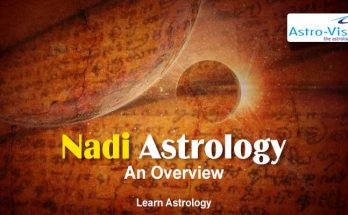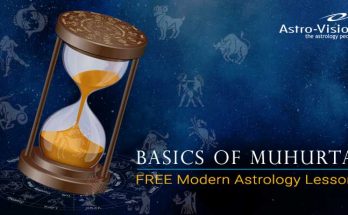Yoga, in astrological parlance, is a specified permutation or combination of planets in the different houses of a horoscope. In popular language, one of good angury is called Yoga and the bad, Arishta.
Largely they constitute a ready reckoner, in the broad spectrum of applied astrological principles. For instance, there is a general principle that fortification of the relationship between lords of quadrants and trines adds to the strength of a horoscope. This could be either through permutator or through a combination of the two. To highlight this feature they are brought under Raja Yogas. Similarly, harmonious placement of planets who are natural friends is felicitous. When Jupiter and the Moon are in quadrants it is known as forming Gajakesari Yoga. Again, the general principle Grahanam Amsakam Balaam – meaning, the integral strength of planets in the Navamsa is highlighted in Neechabhanga Raja Yoga where a planet in debility in Rasi chart shall have gained the status of exaltation in Navamsa.
That is the general lay of Yoga delineation. But, there are other Yogas which do not stem from such general principles. For instance, Ravi Yoga which is formed when the Sun is placed in the 10th and the 10th lord is placed in association with Saturn in the 3rd. Here, a relationship between the two enemies and the 10th and the 3rd houses gets the status of a Yoga.
Rahu and Ketu do not normally figure among benefic combinations and permutations. Nevertheless, an Ashtalakshmi Yoga is caused when Rahu is in the 6th and Jupiter in a quadrant which endows the native with a many-splendoured life. Budh Aditya Yoga is said to be formed when Jupiter is in the Ascendant (with directional strength), the Moon is in a quadrant(forming Gajakesari Yoga), and additionally, Rahu is in the 2nd and the Sun and Mars in the 3rd from Rahu. While the beneficial effects of the first two delineations are rationally explicable, the further stipulations are puzzling, to say the least.
Dr R V Raman has rendered a great service to students of astrology by collecting and collating three hundred such Yogas (including Arishtas) with his own commentary and guidance for proper assessment of their strength or weakness in the title Three Hundred Important Combinations.
Dr Raman gives simple guidelines for the assessment of the strength or weakness of Yogas and also for their facile interpretation. Following these guidelines will enable a prognosticator to be scientific. But there is more to astrology than its scientific aspect. Astrology is a harmonious blend of science and art. In its artistic aspect, the astrologer applies a great deal of his common-sense; he rises above the evidence of his limited senses.
Let us consider the group of Yogas called Sunapha, Anapha, Durdhura and Kemadruma. When a planet other than the Sun and the Nodes is present in the 2nd house from the natal Moon, Sunapha Yoga is formed and the results given are Self-earned property, king,! ruler or his equal, intelligent, wealth and (of) good reputation. When a similar planet is in the 12th from the natal Moon, Anapha Yoga arises and this gives rise to Well-formed organs, majestic appearance, good reputation, polite, generous, self-respect(ing), fond of dress and sense pleasures. In later life, renunciation and austerity. When there are such planets on both flanks of the Moon, Durdhura Yoga is given rise to resulting in the native being bountiful, blessed with great wealth and conveyances. When both houses are untenanted by such planets the native is subject to Kemadruma Yoga which renders him dirty, sorrowful, doing unrighteous deeds, poor, dependent, a rogue and a swindler. For the last mentioned Arishta there are mitigating or nullifying factors.
One of these Yogas is necessarily present in every nativity. You may then divide humanity into these four categories. One can then see the futility of taking the results for literal application to nativities. The principle evidently is that every house and planet gets fortified when there are planets in flanking houses with which planets the planet so flanked establishes temporary friendship as well. This is particularly needed in the case of the luminaries, the Moon and the Sun, I representing the mind and the soul respectively. Mind causes pain and pleasure, hell and heaven. Its Karaka is the Moon and he is the fastest moving, quickest changing planet for the earth. Mind undergoes incredibly fleeting changes. It is most important then that the Moon should be endowed with a measure of stability and this comes through the balancing influences of planets on either side. When the mind is thus | fortified, the thinking power of the native has I the potentiality, if other factors so favour, to give unto oneself one or more of the indicated benefits.
It is the extension of the same principle to the 7th house which is very important for material happiness and prosperity that forms the Chandra Adhi Yoga and the Lagna Adhi Yoga. The 7th represents the spouse, marital felicity, trade and speculation, partners, foreign travel, latent energy and such important ingredients that go to make life or mar it. When benefics are present in the 6th, the 7th and the 8th, not only is the 7th blessed with a benefic; it is subjected to Subhakartari Yoga.
If the Moon has malefics on its two flanks, Durdhura Yoga is nevertheless present. But, the Moon is also subject to Papakartari Yoga. The results of Durdhura Yoga formed with benefics in flanks cannot be the same as when it is formed with malefics. Papakartari Yoga, despite the mental stability which goes with the presence of planets on flanks, introduces a predisposition to quick anger and sometimes to s streak of cruelty. Again, should Jupiter be posited in the 2nd from the Moon, this forms Sunapha Yoga with Jupiter becoming Atimitra of the Moon. By reason of the Moon being in the 12th from Jupiter, however, Sakata Yoga also arises, Both Yogas are effective.
An astrologer must take these things into consideration in one sweep. Piecemeal consideration will lead to certain untenable and incompatible conclusions. Moreover, the results of each Yoga are varied. It is not however necessary that all these results should manifest wherever such Yogas are found. The nature of the house, the position and strength of the lord, the nature of the flanking planets, their relation to the house in which they are posited must all be considered before concluding what form and shape the result or results will be found to assume.
Next to the Moon, representing the mind, the most important is the Sun, representing the vital body and soul, for the fortification through the presence of planets in flanking houses. The 2nd house fortification of the Sun is Vesi Yoga, the 12th house is Vasi Yoga and both houses, Obhayachari Yoga. Here too in making final judgmental Ac factors mentioned in respect of the Moon’s Yogas must be taken into consideration whether Papakartari or Subhakartari yoga is present.
In Gajakesari Yoga, what is sought is a felicitous relationship between Jupiter, the greatest benefic representing wisdom and higher knowledge, and the moon, ruling over the mind by the two being in mutual quadrants. It stands to reason that the Yoga must be considered most powerful when they are in mutual aspect also. The next most powerful positions will be when Jupiter is in the Ascendant and the Moon in the 4th where both planets have directional strength also. Sacchidananda Maharishi’s Yogamrutham mentions Gajakesari Yoga as the position of Jupiter and the Moon in the 7th from each other. According to another authority, however, unless such Moon is subjected to Subhakartari Yoga this mutual aspect is to be classified as Ishtarishta yoga, which produces the achievement of all the desires of the native but sabotages the fullest enjoyment of them. He will be a very inadequate astrologer who will spot the presence of Jupiter in Quadrant from the Moon and read off all the results as per text-books. Such a relationship is undoubtedly beneficial but not invariably an unmixed blessing. In a case of Gajakesari Yoga that was brought to this writer’s attention, concurrently with the commencement of Saturn Bhukti in Jupiter Dasa at the age of 31, the native when he came into a substantial inheritance was also pronounced a diabetic and prescribed a severe regimen of diet. By close scrutiny of the position of the house involved and the lords and such other relevant factors, the effect could well be read into the chart. It is a clear case of Ishtarishta Yoga.
Articles of this nature have their limitations. An exhaustive discussion on the assessment of even the important Yogas is very obviously not possible. All that could be and is attempted is pointing out some of the guidelines that must be followed when Yogas are assessed.
Courtesy: Modern Astrology (Y. Keshava Menon)








4 Comments on “Assessment of Yogas”